The Complete Beginner’s Guide to Soccer Shoes: Match the Right Cleats to the Right Surface
5 min read
Choosing the correct soccer shoe (cleat) can make or break your game. The wrong sole type leads to slips, injuries, and poor performance. This guide explains every type of soccer shoe, which surface it’s best for, and what beginners should know before buying.
Quick Overview — Match Shoe to Surface
- Indoor courts / futsal: Indoor trainers (futsal shoes)
- Short artificial turf: Turf shoes (TF)
- Firm natural grass: Firm-ground cleats (FG)
- Wet, muddy grass: Soft-ground cleats (SG)
- Modern 3G artificial grass: Artificial-ground cleats (AG)
- Mixed surfaces: Multi-ground / Hybrid (MG)
- General training & casual play: Training / casual sneakers (non-cleat)
Indoor Trainers (Futsal Shoes)
Best for: Indoor courts, gym floors, futsal courts (wood, composite, hard plastic)
Look: Low-profile, flat rubber sole with non-marking tread patterns
Key Features:
- Strong grip on smooth floors
- Flexible soles for quick cuts
- Reinforced toe area for toe pokes
- Close ball feel
When to Use: Futsal, small-sided indoor games, training in gyms
Backyard Use: Great for concrete or patio games and dribbling practice
Avoid: Natural grass or turf (you’ll slip and risk injury)
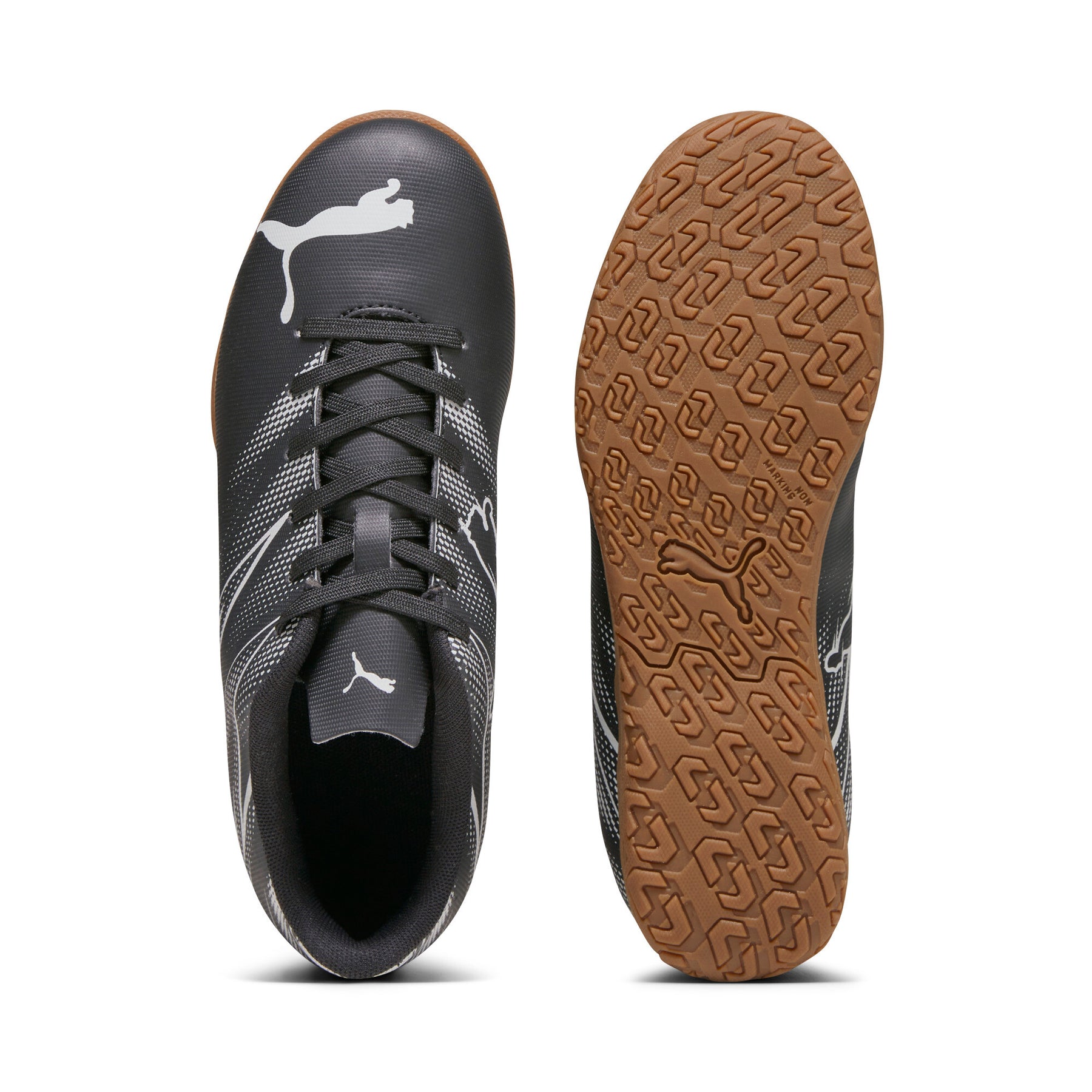
Turf Shoes (TF)
Best for: Short-pile artificial turf (school fields, neighborhood pitches)
Look: Outsole covered in small rubber nubs (“pips”)
Key Features:
- Durable for abrasive turf
- Stable for quick turns
- Protects feet from turf burn
When to Use: Practices or matches on synthetic turf
Backyard Use: Good on compact dirt yards or worn grass; not for concrete
Avoid: Indoor gym floors (too much grip) and muddy grass
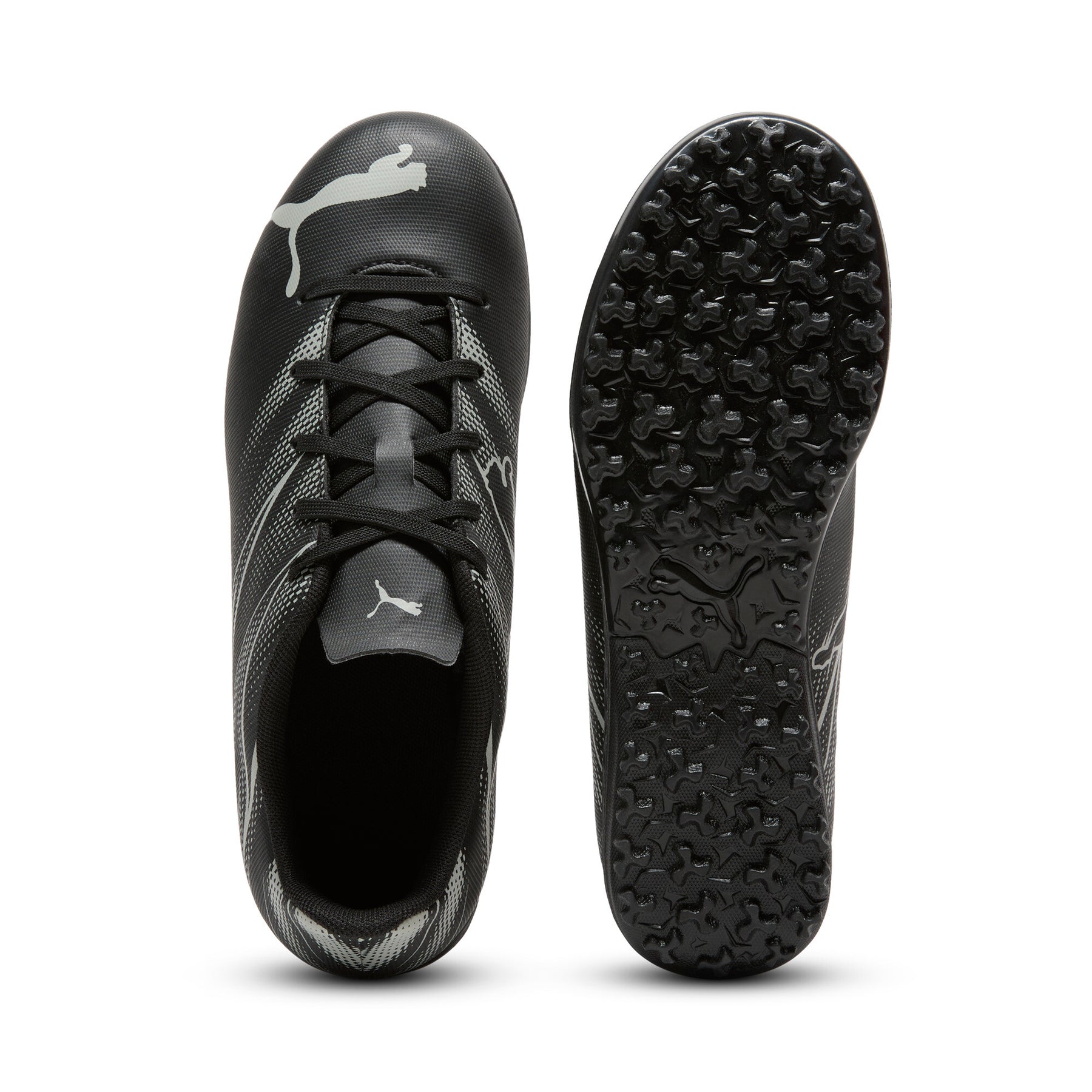
Firm-Ground Cleats (FG)
Best for: Dry or firm natural grass
Look: Molded studs in patterns across the outsole
Key Features:
- Balanced traction and pressure distribution
- Standard for most outdoor soccer
When to Use: Most outdoor matches and training
Backyard Use: Fine for grassy yards with even footing
Avoid: Muddy fields and all indoor courts

Soft-Ground Cleats (SG)
Best for: Wet, muddy, soft natural grass
Look: Longer studs, often metal or screw-in
Key Features:
- Exceptional grip in muddy conditions
- Replaceable studs for adaptability
When to Use: Rainy matches and soft fields
Backyard Use: Not recommended (studs can damage lawn, unsafe on hard ground)
Avoid: Hard or indoor surfaces, synthetic turf
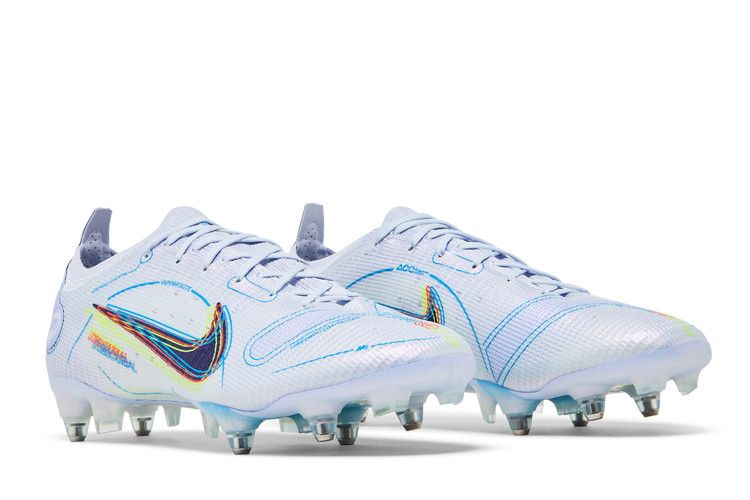
Artificial-Ground Cleats (AG)
Best for: Modern 3G artificial grass (longer, denser fibers)
Look: Many shorter studs, evenly distributed
Key Features:
- Protects joints from stud pressure
- Safer on turf compared to FG
When to Use: Dedicated AG fields, community pitches
Backyard Use: Good for synthetic lawns; not for concrete or mud
Avoid: Wet natural fields and indoor courts
Multi-Ground / Hybrid (MG)
Best for: Players switching between grass and turf
Look: Mix of stud shapes and lengths
Key Features:
- One pair for multiple surfaces
- Versatility and convenience
When to Use: Training and games on varied fields
Backyard Use: Perfect for switching between grass and turf
Avoid: Extreme conditions (deep mud, slick courts)
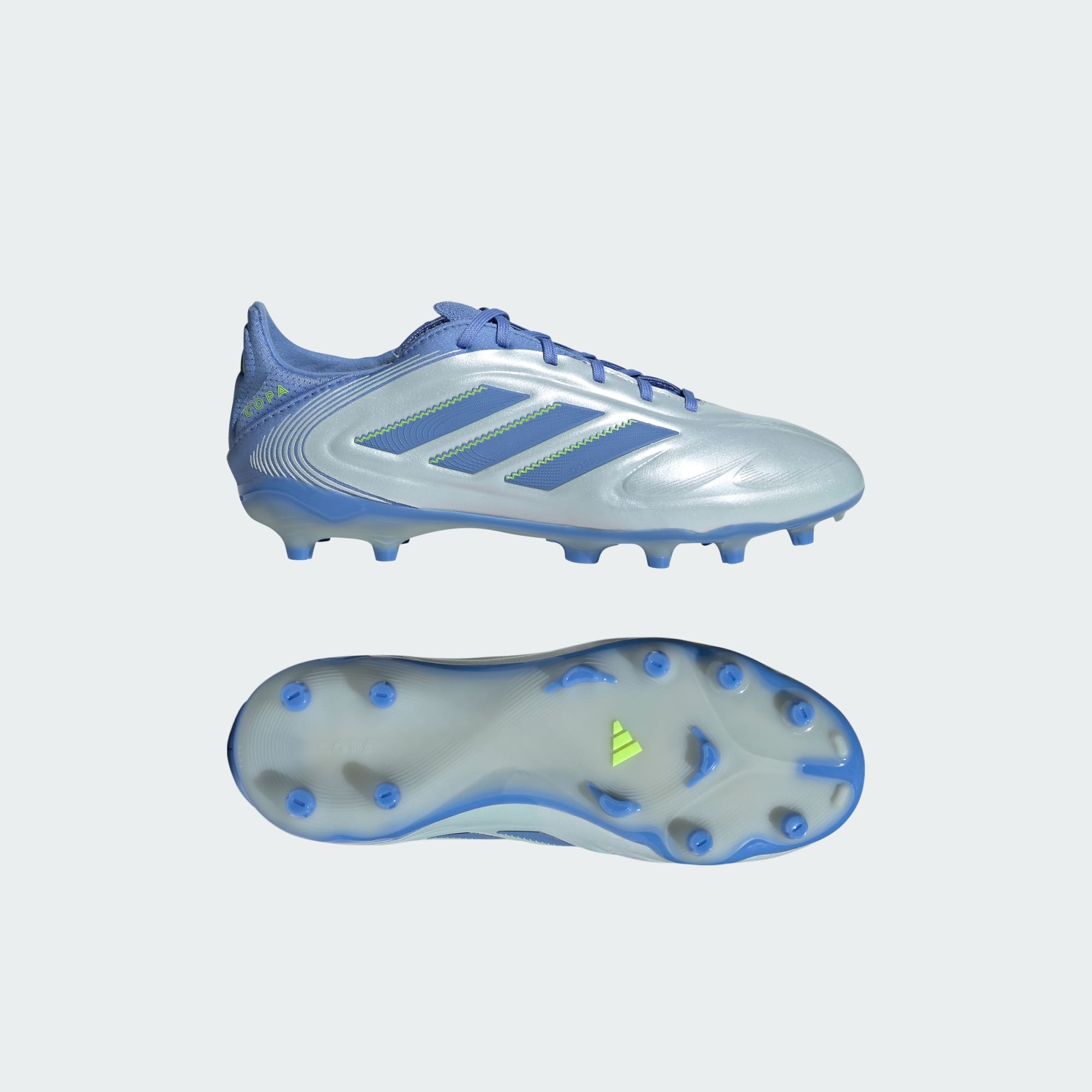
Training / Casual Sneakers (Non-Cleats)
Best for: Gym, pavement, light training, casual play
Look: Flat or lightly textured soles with cushioned midsoles
Key Features:
- Comfort and support
- Not soccer-specific traction
When to Use: Warm-ups, gym sessions, backyard kicking
Backyard Use: Good for drills and light play on lawns or driveways
Avoid: Matches or serious training where traction matters
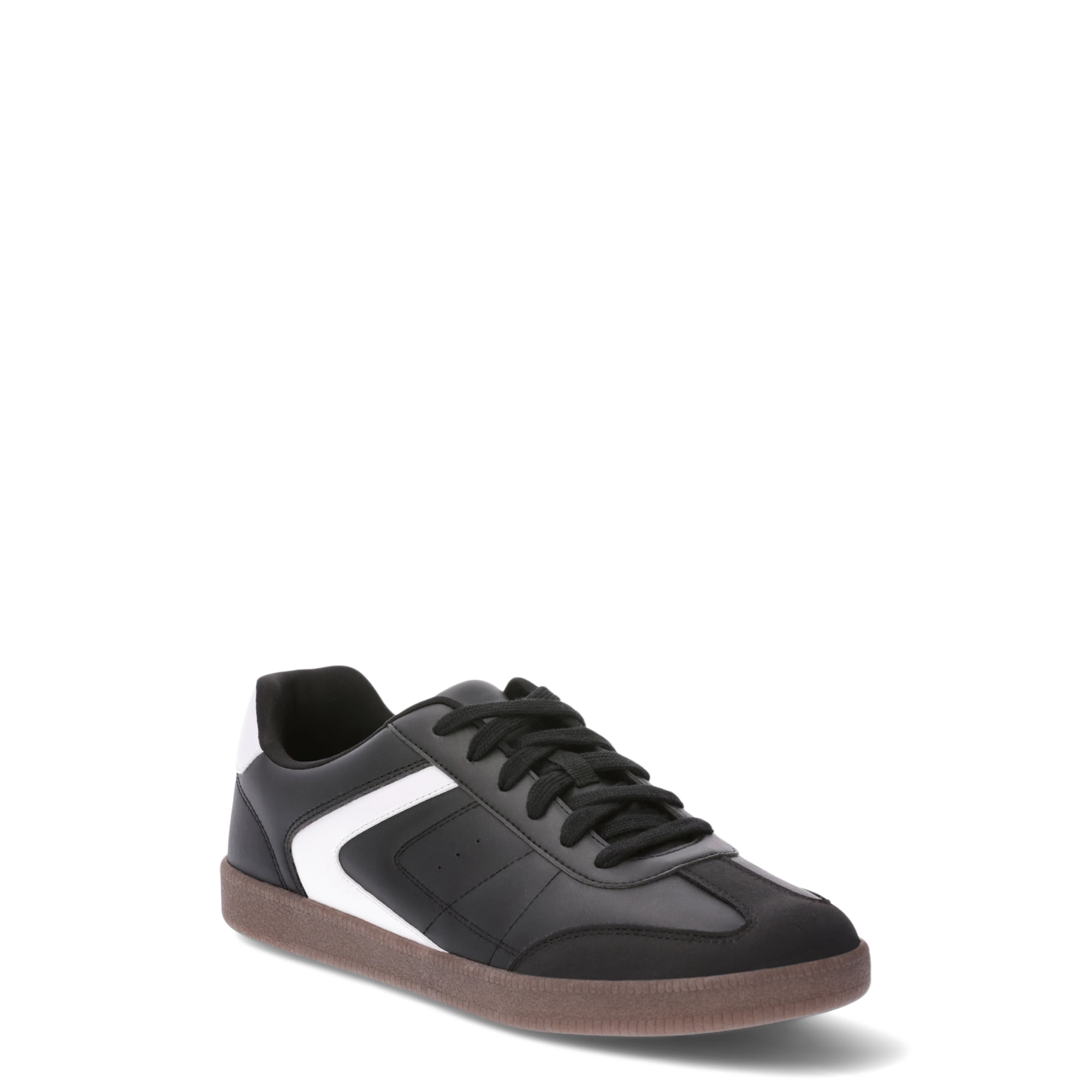
Beginner Checklist — How to Pick the Right Shoe
-
Match shoe to surface: More important than brand or style
-
Backyard play:
- Concrete/patio → Indoor trainers
- Worn grass → Turf or FG (depending on grass length)
-
Fit: Snug, not painful; leave a thumb’s width at the toe
-
Foot shape: Always try with game socks
-
Playing frequency: Invest in quality or multiple pairs if training often
-
Budget: Prioritize correct outsole, not elite price tags
-
Facility rules: Indoor = non-marking; turf = no metal studs
Care and Safety Tips
- Rotate pairs to let materials recover
- Clean leather and remove turf sand regularly
- Replace studs/soles when worn out
- Never wear metal studs indoors or on turf
Common Beginner Mistakes
- Wearing indoor trainers on grass → slips and injuries
- Using FG or SG cleats indoors → damages floors, unsafe
- Picking style over fit and traction → performance drops
- Buying shoes too small → blisters and long-term pain
Quick Glossary
- Stud/Cleat: Protrusion for grip
- Non-marking sole: Won’t scuff gym floors
- Pips/Nubs: Small rubber bumps on turf shoes
- Screw-in studs: Replaceable studs for SG cleats
Label Your Gear Well: Why Surface Labels Matter
A youth coach once packed identical-looking pairs of indoor futsal shoes and FG cleats for a tournament. Some players wore the wrong pair on a slick indoor court. The ones in proper indoor trainers dominated; the rest slipped constantly. After labeling shoes by surface, practices and matches improved immediately — and ankle injuries were avoided.
BackyardPremierLeague.com is your source for official BPL content. Elevate your sense of play. Your pitch. Your glory.
Recommended from this blog
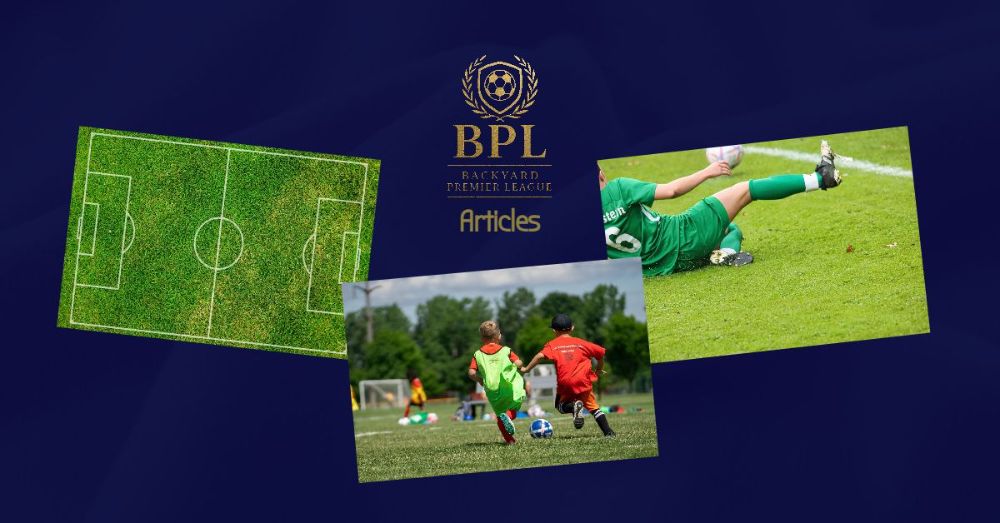
How to Create a Safe, Level Backyard Soccer Field: Step-by-Step Guide
Transform your backyard into a safe and level soccer field with this detailed step-by-step guide. Learn how to assess your lawn, clear debris, level the ground, handle pests and obstacles, and maintain your field for years of fun and safe play — all without specialized equipment.
6 min read
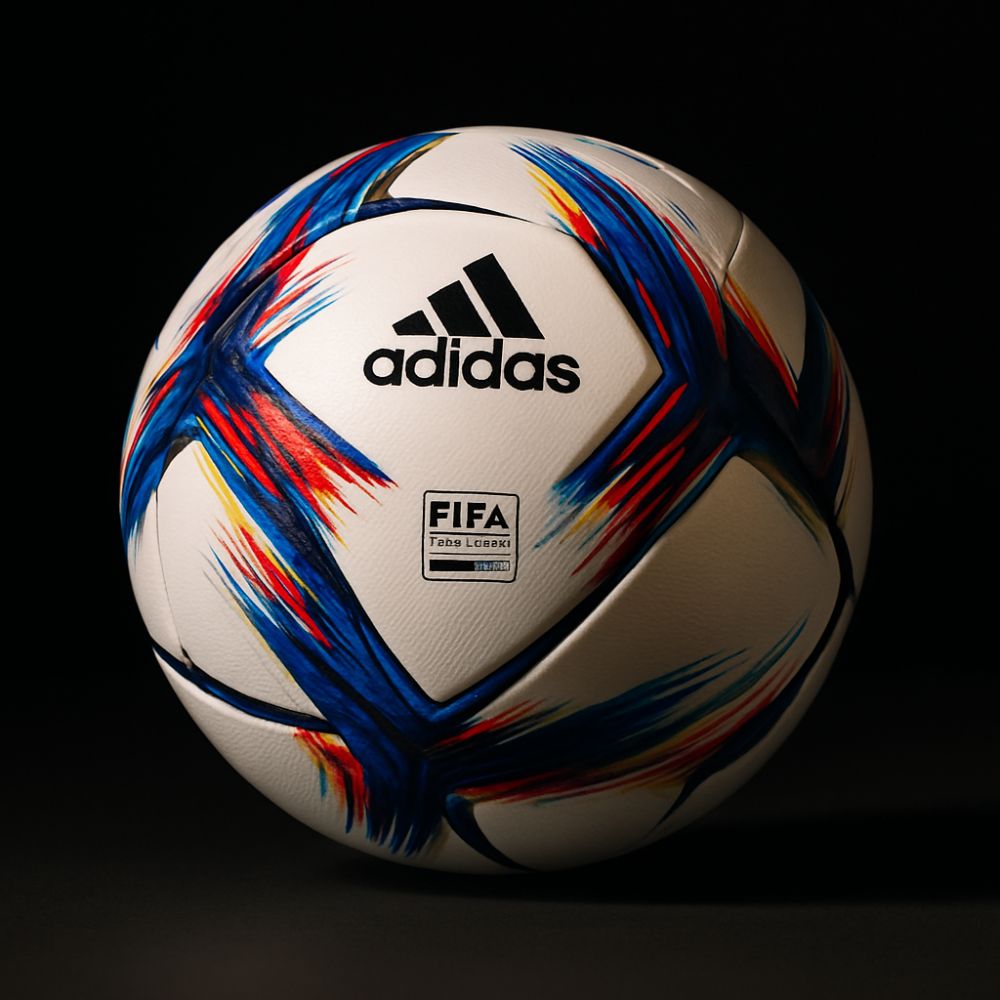
Soccer Ball Master Class: Sizes and Choosing the Right Fit for Every Age Group
Learn how to choose the right soccer ball for you or your player you love. We cover sizes, bladder types, prices and ways to save. Backyard Premier League article.
5 min read
Comments